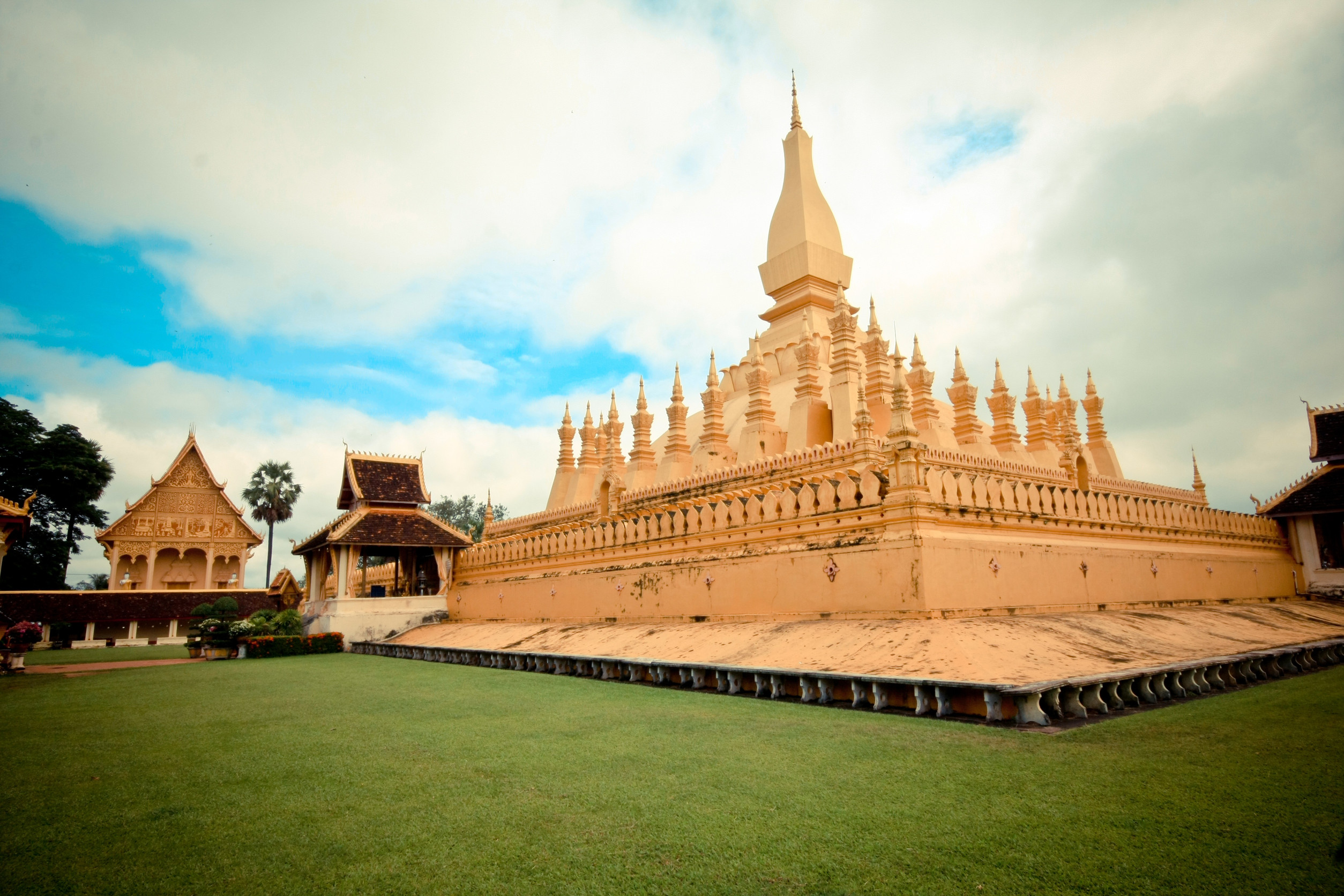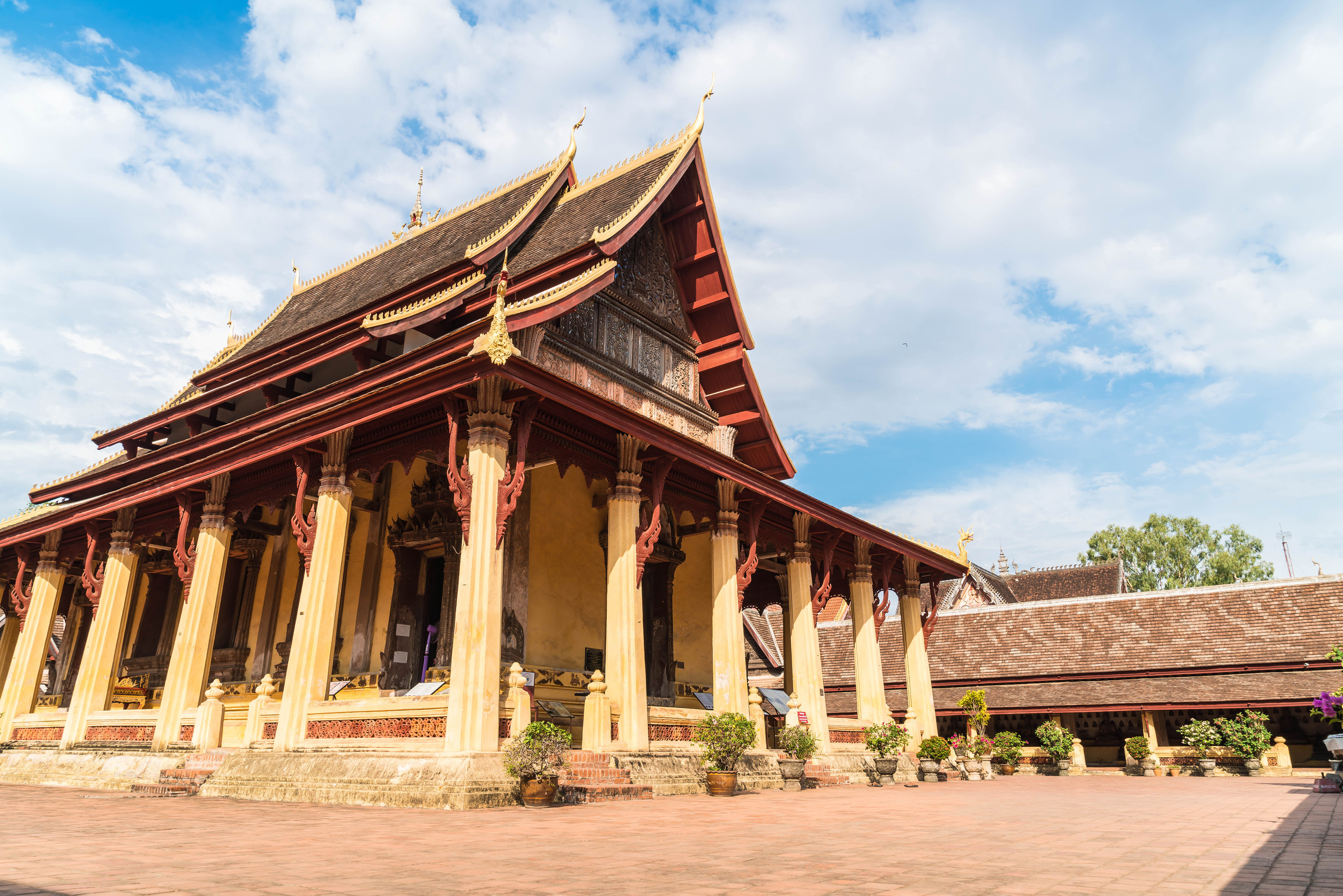Laotian culture, traditions, and history run deep within the society, which is respectful, full of humility, and in harmony with itself. Knowledge of local cultural etiquette and social norms will help one avoid unintended offense and actually enrich their experience in this lovely Southeast Asian nation. Understanding cultural etiquette and social norms is vital when visiting Laos. Respect Buddhist traditions, dress modestly, and greet with a "nop" (palms together). Travelers should secure a Laos visa online for smooth entry.

Here are the main cultural points that one should note on a visit to Laos:
Understanding Lao Greetings and Traditional Handshakes
The first thing one should know in dealing with the Lao is that greetings are an important part of their culture. The most common greeting is the "nop," where you press your palms together in a prayer-like gesture and bow slightly. This is similar to the traditional Thai "wai" and shows respect to the other person, especially elders and monks. When greeting someone, it's essential to be polite and not too forward. A handshake can be common in urban areas, though much less formal compared to Western standards. Remember to also greet people in a soft and respectful tone of voice, especially when one is meeting their elders or those of a higher status.
Proper Dress Codes for Visiting Temples in Laos
Modesty is integral to Lao culture; thus, travelers need to attire themselves appropriately. One needs to dress sufficiently to cover one's shoulders and knees when visiting temples and monasteries, the religious spots in the country. Long pants or skirts and a suitable covering for armless tops and sleeves should cover both males and females. Generally speaking, while restaurants, markets, and all other public areas allow casual wear, modest clothes that can provide sufficient coverage are appreciated, especially in villages.
The Importance of Shoes in Lao Homes and Temples
This custom of removing shoes before entering a house or temple in Laos is greatly impregnated with respect and cultural practices. Here's why it's important:
- Homes
The Laotian culture necessitates removal of shoes before entering the house to show respect to the household and keep the interior clean. Most Lao homes are made out of tile, wood, or other floors, and usually the floors inside a house serve as places to sit, eat, and rest on; shoes should therefore not bring dirt and dust into the houses from outside. The gesture also means regard for politeness and modesty upon entry into someone's private abode.
- Temples
Shoes also have to be taken off before entering any temple or holy place. In Lao culture, temples are considered holy and sacred places; leaving shoes outside is a sign of respect to the spiritual environment. The practice helps keep the area clean and reflects regard for the space and the monks occupying it. Visitors should also dress modestly, covering shoulders and legs, as a form of respect to the temple and its religious significance.
Showing Respect to Elders and Monks
Respecting elders and monks is deeply ingrained in Lao society. It is customary to offer your seat to older people, and bowing or lowering your head slightly is a sign of respect when speaking with them. Monks are highly revered, and interactions with them should always be respectful. It is considered improper to touch a monk or even to hand anything directly to a monk if you are a woman. If giving a present or offering something, you should ask a man to hand it over to the monk. When visiting temples, it's crucial to be quiet and avoid disruptive behavior, as these are sacred spaces for Lao people.
Dining Etiquette in Laos

Food is a huge part of the culture in Laos, and it also plays a huge role in social interactions. When dining, wait for the oldest or most senior person to start eating before digging in yourself. Most of the time, food is served family-style, and sharing is the way to go. It is also polite to eat with your right hand, since the left hand is considered unclean in Lao culture. You may be offered sticky rice, which is often eaten with the hands, but utensils like spoons and forks are also used in many meals. If you’re invited to someone’s home, it is a good idea to bring a small gift as a sign of appreciation.
Lao Dining Etiquette: Do's and Don'ts
Here are the key do's and don'ts to follow while dining in Laos.
|
Do's |
Don'ts |
|
Wait for the Oldest to Start: Wait for the oldest at the table to start eating before you begin. |
Don't Point Your Feet: Avoid pointing your feet towards others, especially the host. |
|
Use Your Right Hand: Always eat with your right hand, as the left hand is considered unclean. |
Don't Rush Your Meal: Mealtime in Laos is leisurely; enjoy the food and take your time. |
|
Share Food: As meals are served family-style, offer food to others before serving yourself. |
Do Not Pass Food with Your Left Hand: Use your right hand or both hands when passing food. |
|
Compliment the Food: Saying "aroy mak" (very delicious) shows appreciation for the meal. |
Do Not Start Eating Before Everyone is Served: Wait for everyone to be served before starting, and let the eldest begin. |
|
Leave a Little Food on Your Plate: Leaving a small amount of food is a sign of contentment. |
Do Not Waste Food: Take only what you can eat and avoid wasting food. |
|
Bring a Gift: If invited to a Lao home, bring a small gift such as fruits or desserts. |
Do Not Eat with Your Hands in Formal Settings: In formal settings, use utensils instead of your hands. |
|
Respect Buddhist Rituals: If there is any Buddhist ritual before the meal, be respectful and wait for the meal to be served. |
Avoid Drinking Too Much Alcohol: Drink in moderation and avoid overindulgence. |
The Importance of Personal Space in Laos
Personal space is essential in Laos, and maintaining a respectful distance when speaking to others is important. When sitting with others, avoid sitting too close or facing directly toward someone's head, as the head is considered sacred in Lao culture. It is considered impolite to touch someone's head, so be cautious when interacting with locals. When interacting with friends or family, physical gestures such as hand-holding may be more common, but public displays of affection between couples are generally frowned upon.
Photography Etiquette: What’s Acceptable in Laos
Taking photos in Laos is a great way to capture memories, but there are rules to be followed. Always ask for permission before photographing people, especially monks, since many of them do not want to be photographed. In religious sites, avoid taking photos during ceremonies or places where photography is prohibited. Also, do not point your camera at people's faces; it is considered impolite. When taking pictures in temples, be respectful of the sacredness of the place and refrain from taking shots that would be deemed not decent.
Proper Gift Giving Etiquette in Laos

Gift-giving in Laos is a very significant gesture and is especially important if visiting homes or when meeting a person for the first time. A few important points to note are as follows:
- Type of Gifts: Food items, fruits, or local handicrafts make for popular gifts. These are appreciated and seen as a sign of respect and goodwill.
- Presentation: Gifts should always be given with both hands; it is a sign of respect. If the gift is wrapped up, make sure wrapping is simple and inconspicuous.
- Avoid Certain Gifts: It is best to avoid gifts that might be viewed as too personal, such as clothing or jewelry. Gifts that are very expensive may be viewed as an obligation, so modest gifts should be preferred.
- Receiving Gifts: Upon receiving a gift, gratitude should be shown, and in some cases, gifts are opened in front of the giver to show appreciation for the giver's thoughtfulness.
Understanding The Concept of "Face" in Laos
The concept of "face" is important in Lao culture. It is the maintenance of a person's good reputation, dignity, and respect. Causing a person publicly to lose face is considered very impolite. To visitors, this implies being non-aggressive, not arguing in public, and at all times being respectful and humble. Public criticism of someone is a no-no because that will "lose face." On the flip side, the person is made to "gain face" when he is reprimanded or praised for having accomplished something in public view.
Appropriate Behavior When Visiting Buddhist Monasteries

In Laos, the Buddhist faith plays an integral part in daily life, and monks are highly respected members of society. It's important to act with reverence when in the presence of monks. For example, women should never touch monks, and it is considered disrespectful for a woman to hand anything directly to a monk. Men, however, may interact with monks more freely. If you visit a monastery or temple, dress appropriately and behave respectfully. Do not raise your voice in holy places since this is a place for reflection and prayer.
Respecting Lao Traditions and Festivals
Laos has a number of cultural festivals that allow travelers an insight into the traditions of the country. This would include festivals such as Pi Mai, which is the Lao New Year, Bun Bang Fai-Rocket Festival, and Boun That Luang, one of the most important religious festivals in Vientiane. During such events, visitors can easily fit into the atmosphere by joining respectably in those customs, rituals, and spirituality accompanying each such occasion. If invited to a local festival or celebration with a family, it is considered good manners to bring a small gift as a gesture of appreciation.
Tipping in Laos: Is it Expected?
Tipping in Laos is not mandatory, but it is appreciated, especially in tourist areas and for services that go beyond the basic expectations. Here's what you should know:
- Restaurants: While tipping is not compulsory, leaving a small amount (around 5-10% of the bill) is a nice gesture for good service.
- Hotels: For hotel staff, such as porters or housekeepers, a small tip of around 10,000-20,000 Kip per service is appreciated.
- Taxis and Transportation: Tipping taxi drivers is not customary, but rounding up the fare or giving a small tip is a kind gesture.
- Tour Guides: For tour guides, a tip of 20,000-50,000 Kip per person per day is considered a good practice, especially if they’ve provided a great experience.
- General Etiquette: Laos is a country where hospitality is important, so tipping for personalized or exceptional service is appreciated but not expected. Always use small bills or local currency (Kip) when tipping.
Conclusion
An understanding and respect for cultural etiquette in Laos will not only save the traveler from some embarrassing situations but also afford them a deeper appreciation for the Lao way of life. By showing respect for local mores-respect for elders and monks, dressing appropriately, and respect for personal space-travelers can experience Laos in a respectful way that encourages cross-cultural exchange. Be it visits to temples, interactions with locals, or participation in traditional festivals, respect for Lao customs will make for a rewarding and positive experience.
Disclaimer: This guide is for informational purposes only, and though the best most updated suggestions are provided, travel conditions or requirements for safety might change. It's always best to check with the current situation of relevant embassies or a travel agency before you go.
Steps To Secure Your eVisa for Laos
-
Step1: Fill out the online eVisa application by providing your passport details.
-
Step2: Make the payment online using a credit / debit card.
-
Step3: Check your email for the payment confirmation and the electronic delivery of your visa.
